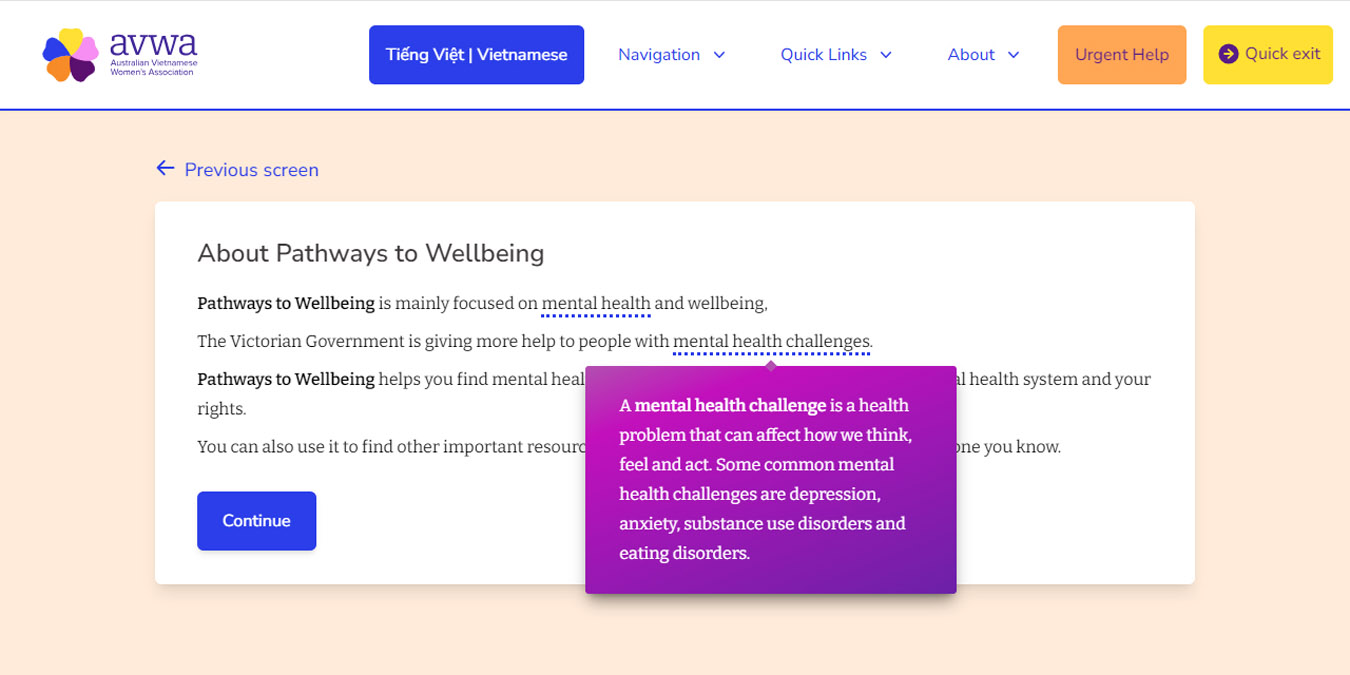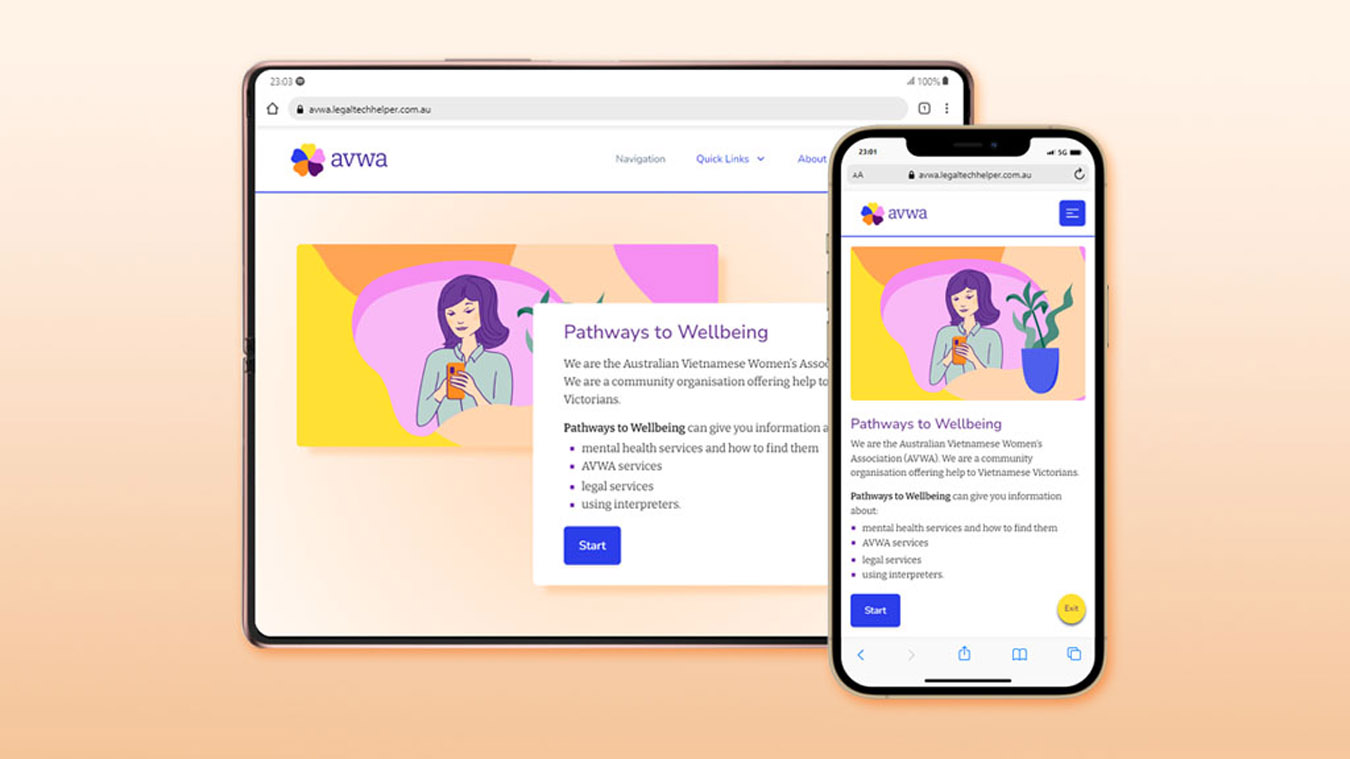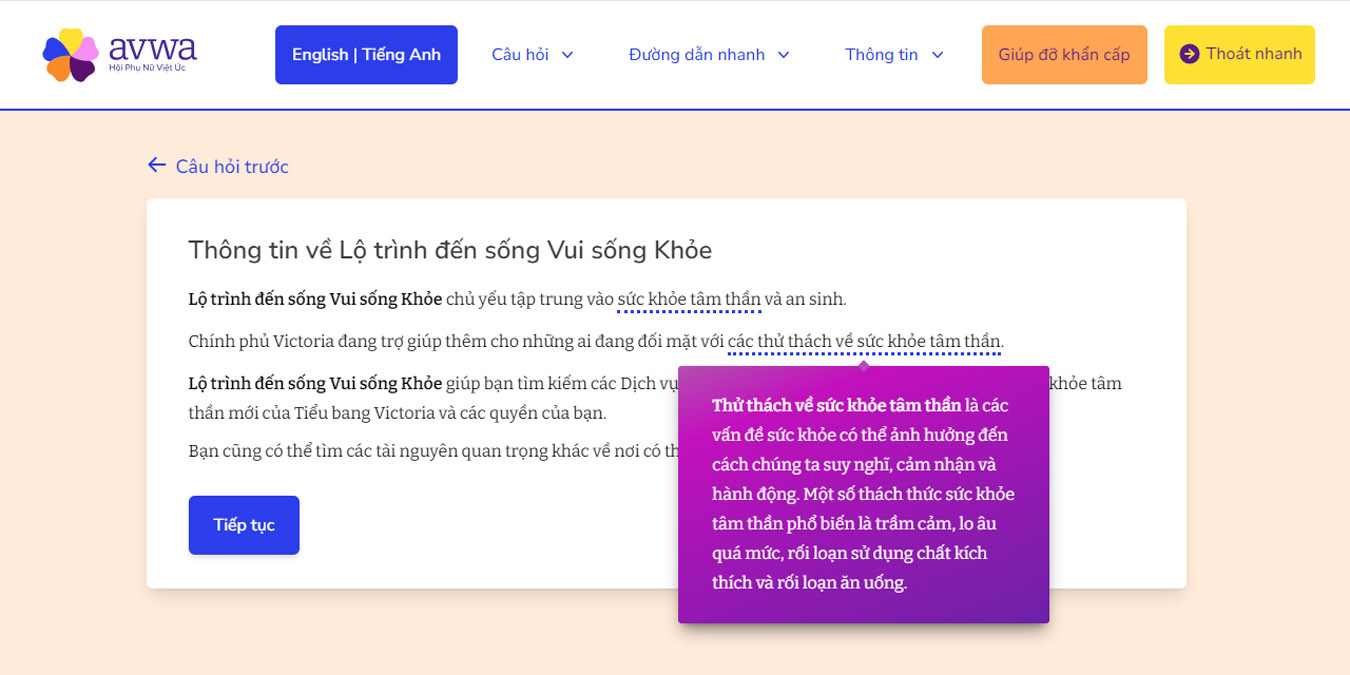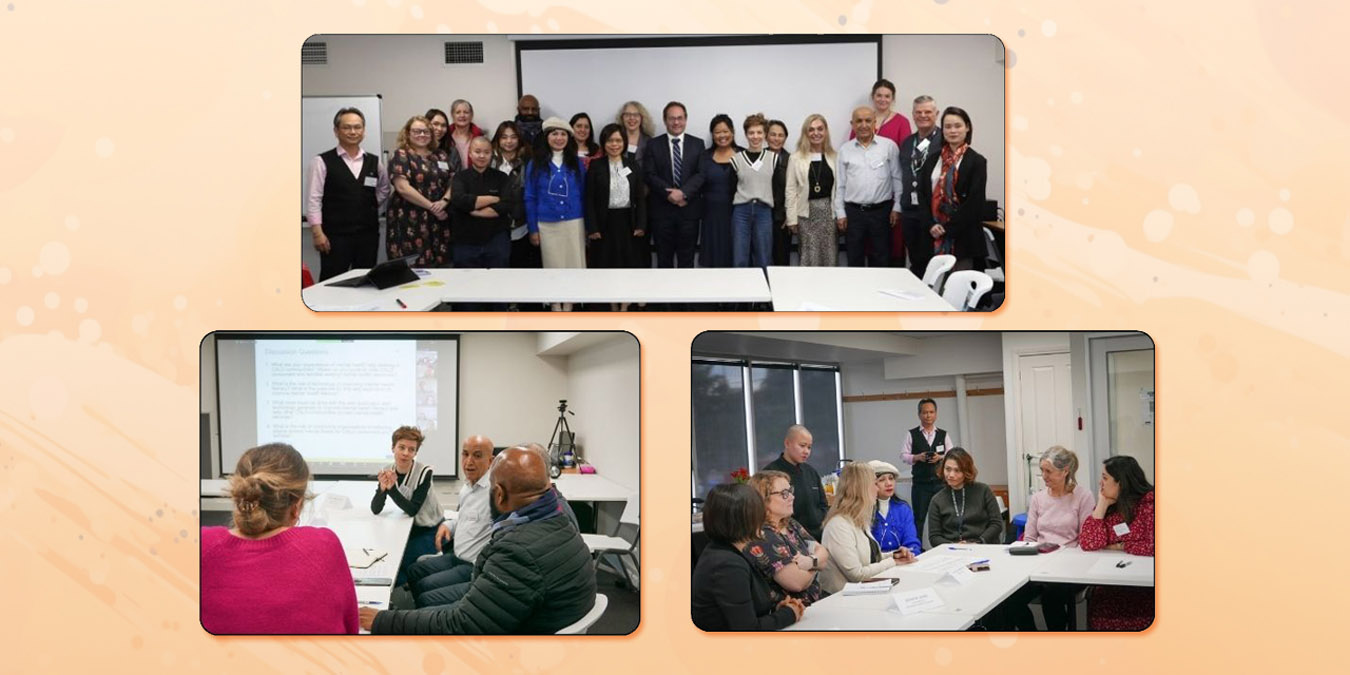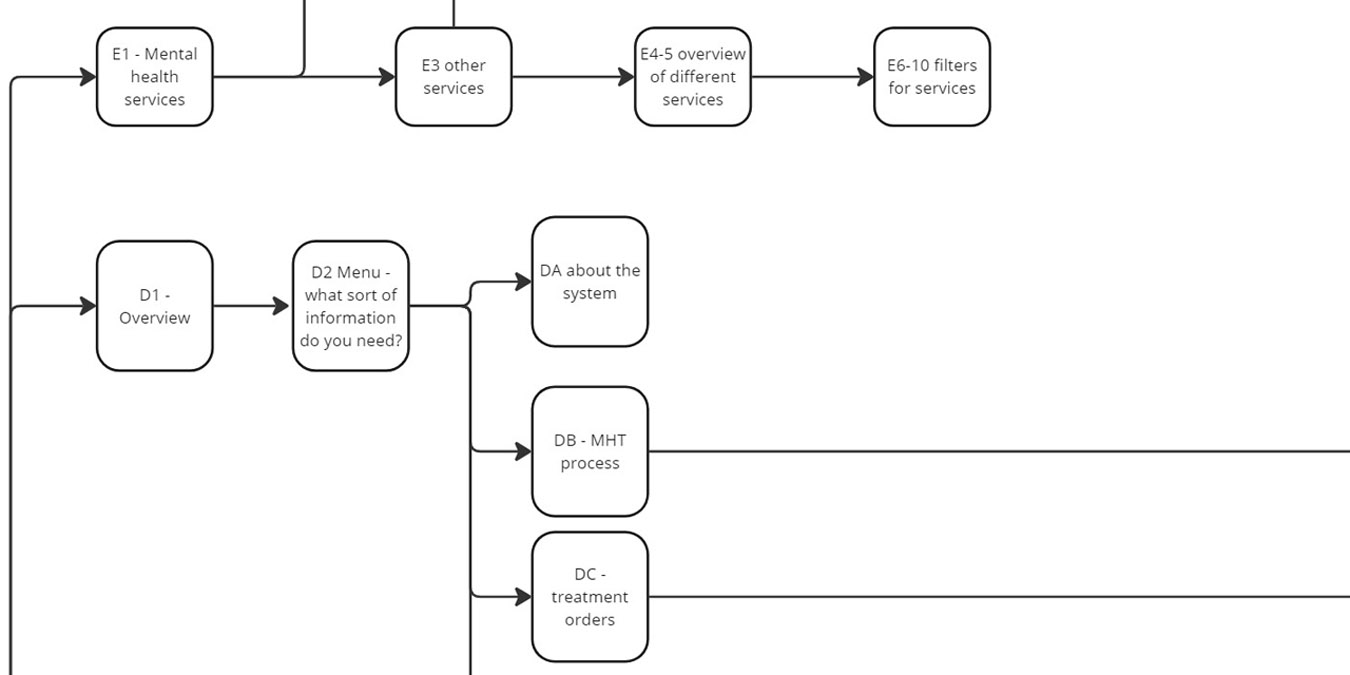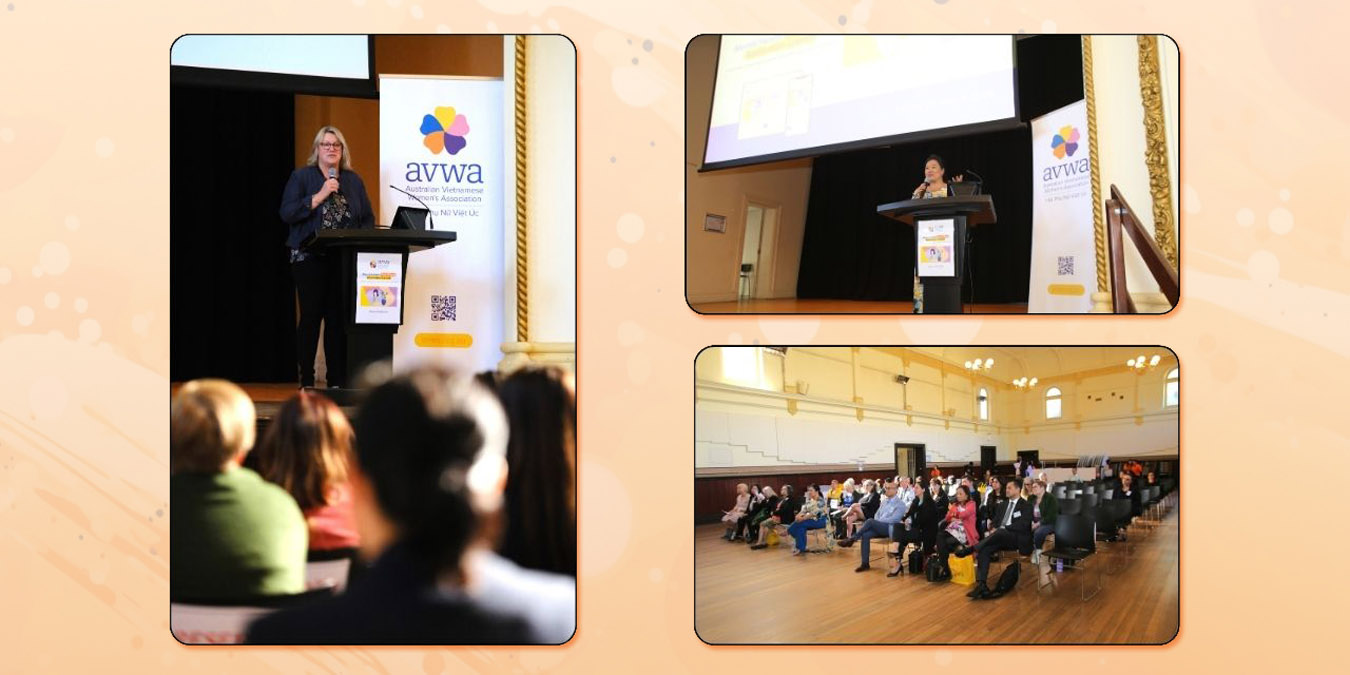The project team combined research and mental health law expertise, experience in service delivery and community engagement, and technological innovation. Co-design and build of ‘Pathways to Wellbeing’ was deeply informed by research and community consultation.
The project proceeded in three phases: (1) research literature review and community consultation, (2) creation of content and design and building the guided pathways web application, and (3) evaluation of the guided pathways and exploration of further opportunities to scale.
We first reviewed the available research literature. It highlighted that Vietnamese people are deeply hesitant to engage with mental health services. We engaged in ethically-approved community consultation with frontline community workers and their clients to understand the mental health law needs of Vietnamese Victorians. Consultation was through semi-structured video interviews in English by a trained researcher fluent in Vietnamese.
Findings from research and consultation showed many of the same barriers present in most CALD communities like language and cultural barriers, and low awareness of services - as well as culturally-specific social stigma, low trust and historically-specific trauma.
To ensure our design was also informed by the experiences and insights of other community organisations, we organised a stakeholder workshop with other community organisations and government stakeholders. We shared our preliminary report with them, and gained their insights into access barriers and the role of technology in their communities. We incorporated their feedback into the design process.
The team used an Agile process, iterating over design and implementation of the web application, using critical insights of community members, staff, stakeholders, and feedback from other organisations. Critical insights were also gained by conducting usability testing throughout the design and build process.
A detailed final evaluation report into the research, consultation insights, design attributes and benefits of online guided pathways, usage and scale-up opportunities was also produced.

